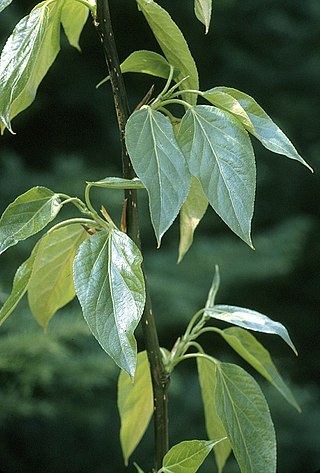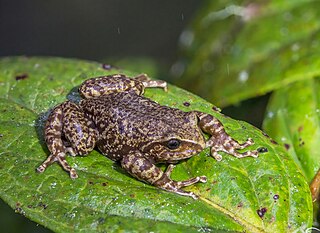Related Research Articles

The Carolina parakeet, or Carolina conure, is an extinct species of small green neotropical parrot with a bright yellow head, reddish orange face, and pale beak that was native to the Eastern, Midwest, and Plains states of the United States. It was the only indigenous parrot within its range, as well as one of only three parrot species native to the United States. It was called puzzi la née or pot pot chee by the Seminole and kelinky in Chickasaw. Though formerly prevalent within its range, the bird had become rare by the middle of the 19th century. The last confirmed sighting in the wild was of the C. c. ludovicianus subspecies in 1910. The last known specimen, a male named Incas, perished in captivity at the Cincinnati Zoo in 1918, and the species was declared extinct in 1939.

Trillium is a genus of about fifty flowering plant species in the family Melanthiaceae. Trillium species are native to temperate regions of North America and Asia, with the greatest diversity of species found in the southern Appalachian Mountains in the southeastern United States.

Vaccinium is a common and widespread genus of shrubs or dwarf shrubs in the heath family (Ericaceae). The fruits of many species are eaten by humans and some are of commercial importance, including the cranberry, blueberry, bilberry (whortleberry), lingonberry (cowberry), and huckleberry. Like many other ericaceous plants, they are generally restricted to acidic soils.

Puffins are any of three species of small alcids (auks) in the bird genus Fratercula. These are pelagic seabirds that feed primarily by diving in the water. They breed in large colonies on coastal cliffs or offshore islands, nesting in crevices among rocks or in burrows in the soil. Two species, the tufted puffin and horned puffin, are found in the North Pacific Ocean, while the Atlantic puffin is found in the North Atlantic Ocean.

The laughing gull is a medium-sized gull of North and South America. Named for its laugh-like call, it is an opportunistic omnivore and scavenger. It breeds in large colonies mostly along the Atlantic coast of North America, the Caribbean, and northern South America. The two subspecies are L. a. megalopterus — which can be seen from southeast Canada down to Central America — and L. a. atricilla, which appears from the West Indies to the Venezuelan islands. The laughing gull was long placed in the genus Larus until its present placement in Leucophaeus, which follows the American Ornithologists' Union.

The little gull, is a species of gull belonging to the family Laridae which is mainly found in the Palearctic with some colonies in North America. It breeds on freshwaters but winters at sea. It is the smallest species of gull in the world. It is the only species in the monospecific genus Hydrocoloeus.

The purple finch is a bird in the finch family, Fringillidae. It breeds in the northern United States, southern Canada, and the west coast of North America.

The summer tanager is a medium-sized American songbird. Formerly placed in the tanager family (Thraupidae), it and other members of its genus are now classified in the cardinal family (Cardinalidae). The species's plumage and vocalizations are similar to other members of the cardinal family.

Helianthus is a genus comprising about 70 species of annual and perennial flowering plants in the daisy family Asteraceae commonly known as sunflowers. Except for three South American species, the species of Helianthus are native to North America and Central America. The best-known species is the common sunflower. This and other species, notably Jerusalem artichoke, are cultivated in temperate regions and some tropical regions, as food crops for humans, cattle, and poultry, and as ornamental plants. The species H. annuus typically grows during the summer and into early fall, with the peak growth season being mid-summer.

North American box turtles are turtles of the genus Terrapene. Although box turtles are superficially similar to tortoises in terrestrial habits and overall appearance, they are actually members of the American pond turtle family (Emydidae). The 12 taxa which are distinguished in the genus are distributed over seven species. They are largely characterized by having a domed shell which is hinged at the bottom, allowing the animal to retract its head and legs and close its shell tightly to protect itself from predators.

Nerodia is a genus of nonvenomous colubrid snakes commonly referred to as water snakes due to their aquatic behavior. The genus includes nine species, all native to North America. Five of the species have recognized subspecies.

The common box turtle is a species of box turtle with six existing subspecies. It is found throughout the Eastern United States and Mexico. The box turtle has a distinctive hinged lowered shell that allows it to completely enclose itself. Its upper jaw is long. The turtle is primarily terrestrial and eats a wide variety of plants and animals. The females lay their eggs in the summer. Turtles in the northern part of their range hibernate over the winter.
The Cosmopterigidae are a family of insects in the order Lepidoptera. These are small moths with narrow wings whose tiny larvae feed internally on the leaves, seeds and stems of their host plants. About 1500 species are described. The taxonomic family is most diverse in the Australian and Pacific region with about 780 species.

Populus balsamifera, commonly called balsam poplar, bam, bamtree, eastern balsam-poplar, hackmatack, tacamahac poplar, tacamahaca, is a tree species in the balsam poplar species group in the poplar genus, Populus. The genus name Populus is from the Latin for poplar, and the specific epithet balsamifera from Latin for "balsam-bearing".

Chelone is a genus of four species of perennial herbaceous plants native to eastern North America. They all have similarly shaped flowers, which vary in color from white to red, purple or pink. Chelone cuthbertii, C. glabra, and C. lyonii are diploid and C. obliqua is either tetraploid or hexaploid, depending on their slight differences in morphology and localities.

Pristimantis is a very large genus of frogs distributed in the southern Caribbean islands and in Central and South America from Honduras to northern Argentina and southern Brazil. With 596 described species, the genus had more species than any other genus of vertebrate animals. Many of these species genus are endemic to the Northwestern Andean montane forests ecoregion in north-western South America.
Bottosaurus is an extinct genus of alligatorid from the Late Cretaceous-Early Paleocene of New Jersey, Texas, and possibly North Carolina and South Carolina. Two species are currently accepted, with a third requiring re-evaluation.
Charactosuchus is an extinct genus of crocodilian. It was assigned to the family Crocodylidae in 1988. Specimens have been found in Colombia, Brazil, Jamaica, and possibly Florida and South Carolina. It was gharial-like in appearance with its long narrow snout but bore no relation to them, being more closely related to modern crocodiles than to gharials.

Pycnanthemum is a genus of herbaceous plants in the mint family (Lamiaceae). Species in this genus are often referred to as "mountain mints" and they often have a minty or thyme-like aroma when crushed. All species of Pycnanthemum are native to the United States and Canada. The center of diversity for the genus is North Carolina with 13 of the 20 species having been collected therein. Nineteen of the 20 species of Pycnanthemum occur in the Eastern US and Canada, and one disjunct species occurs in California and Oregon.
Meherrinia is an extinct genus of inioid river dolphin from the Meherrin River, North Carolina, in the United States. First described in 2012, the dolphin is, in most respects, intermediate in form between the living Amazon river dolphin and the La Plata dolphin, although it is probably more closely related to the former. However, the fossil was discovered in what are believed to be marine deposits, dating from the late Miocene, whereas the Amazon river dolphin is an exclusively freshwater species. Meherrinia therefore was, as of 2012, the only known marine genus of the family Iniidae, although others have been discovered since. Only one species is known.